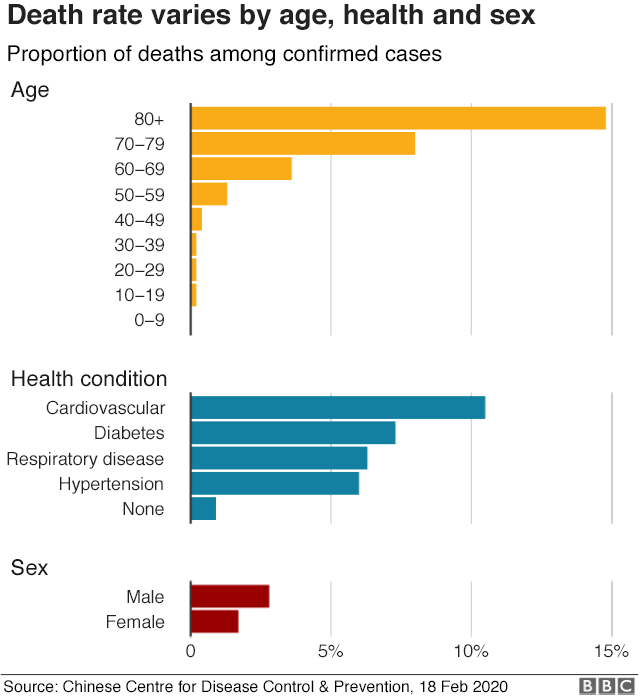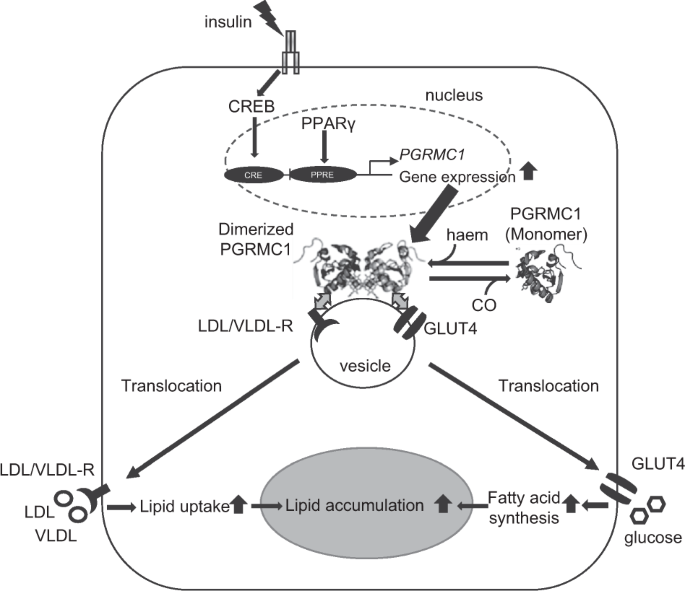Naturalmente mi ero preparato al COVID.
Seguo le regole del distanziamento sociale, ma non ci credo.
Il virus circola, lo puoi trovare dove meno te lo aspetti, io la prevenzione la faccio cercando di essere il più simile possibile a un bambino, femmina.
Che non si ammala mai, anche se il virus lo incontra, lo trasporta, lo sparge e se ne libera.
Io, maschio, 77 anni proprio non sono in una gran bella posizione, anche se apparentemente non ho nessuna delle malattie che aumentano il rischio.
Inizio malattia il 27/02/21
La mortalita' dipende dall'eta', dal sesso, e da altre malattie preesistenti

martedi 23 03 2021
Tampone molecolare, 2 ore di attesa al mattino. Alle 17, il responso: negativo.
Ho gli anticorpi: sono protetto
Ho il tampone negativo: non sono infettivo
Ma devo girare con la mascherina.
Una volta le regole del socialmente corretto riguardavano soprattutto il comportamento sessuale; adesso lo stare con la mascherina e a due metri! Un vero progresso.
Poco per volta, mi riprendo e vado a togliermi cercando la letteratura i dubbi che mi erano venuti sulla causa dei miei sintomi.
31/03/2021
tnf alpha and appetite
Tnf+alpha+and+hallucinations
Covid-19+and+Curcuma+longa
Evidence that Ginkgo Biloba could use in the influenza and coronavirus COVID-19 infections, 16 02 2021
Tnf+alpha+and+upregulated+by+1-25-dihydroxyvitamin+D-3
Ginsenoside Rg3 upregulates myotube formation and mitochondrial function, thereby protecting myotube atrophy induced by tumor necrosis factor-alpha, 2019
Tnf+alpha+and+mitochondrial
Tnf+alpha+and+glucocorticoid
Tnf+alpha+and+fenofibrate
TNF-α and hypoglycemia
Tnf+alpha+and+mitochondrial+uncoupling+protein
Tnf+alpha+and+Mitochondrial+uncoupling+protein+2
Tnf+alpha+and+mitochondrial+respiratory+chain+uncoupling
tnf+alpha+and+ROS
02 04 2021
Fungal Diseases and COVID-19
TNF and ROS Crosstalk in Inflammation, 2016
06 04 2021
urinary+incontinence+and+TNF-α
09 04 2021
TNF-α and prostate calcification
Espansioni
IgE and TNF-α
IgE-->TNF-α
TNF-α and serum bilirubin
Optic neuritis":https://www.qinsight.info/search?s=r&query=optic+neuritis+and+TNF-%CE%B1&so_a=&so_j=&so_i=
Leukotrienes and TNF
EBV suppresses prostaglandin E2 biosynthesis in human monocytes, 2000
- Abstract
It is well known that EBV has developed strategies to evade immune surveillance. Previously, EBV was shown to bind specifically to monocytes and regulate expression of proinflammatory mediators such as IL-1, IL-6, TNF-alpha, and leukotrienes. EBV was also found to affect phagocytosis of monocytes. In this study, we show that in addition to these effects, EBV suppresses the biosynthesis of PGE2, a pleiotropic immunomodulatory molecule that is synthesized by the dioxygenation of arachidonic acid via the cyclooxygenase (COX) pathway. This down-regulation of PGE2 formation involved the inhibition of the inducible COX-2 isoform expression both at the transcriptional and translational levels, whereas expression of the constitutive COX-1 isoform was unaltered. Furthermore, exposure of monocytes to EBV was found to impact on the NF-kappaB activation pathway, which plays an essential role in the induction of COX-2 in monocytes. The inhibition of PGE2 biosynthesis was relieved when the experiments were conducted in presence of phosphonoacetic acid, an inhibitor of herpesviruses DNA polymerase, indicating that viral replication and/or neosynthesized viral proteins were involved in this process. Thus, inhibition of PGE2 biosynthesis in monocytes may represent an additional mechanism underlying EBV pathogenicity.
per gli amici
Atrial fibrillation
TNF and VEGF
TNF-α and VEGF
TNF-α and iron deficiency
28 04 21
App Slack per lavorare su temi personalizzati
App Slack per condividere i sintomi: Human Community
quantifiedflu
modello di descrizione grafica dei sintomi
Da esplorare!!!
ACE and TNF-α
12/05/2021
TNF-α and spermatozoa motility
02 06 21
olfactory+receptors+and+TNF
EBF1+and+white+adipose+tissue
F1+and+TNF
heme+and+TNF
Vedi Heme Transport da endo/lisosomi
Haem oxygenase-1 induction protects against tumour necrosis factor alpha impairment of endothelial-dependent relaxation in rat isolated pulmonary artery. 2009
Induction of HO-1 by curcumin or haemin protected against TNFα-induced hyporesponsiveness to ACh.
A role for hemopexin in oligodendrocyte differentiation and myelin formation. 2011
Myelin formation and maintenance are crucial for the proper function of the CNS and are orchestrated by a plethora of factors including growth factors, extracellular matrix components, metalloproteases and protease inhibitors. Hemopexin (Hx) is a plasma protein with high heme binding affinity, which is also locally produced in the CNS by ependymal cells, neurons and glial cells. We have recently reported that oligodendrocytes (OLs) are the type of cells in the brain that are most susceptible to lack of Hx, as the number of iron-overloaded OLs increases in Hx-null brain, leading to oxidative tissue damage. In the current study, we found that the expression of the Myelin Basic Protein along with the density of myelinated fibers in the basal ganglia and in the motor and somatosensory cortex of Hx-null mice were strongly reduced starting at 2 months and progressively decreased with age. Myelin abnormalities were confirmed by electron microscopy and, at the functional level, resulted in the inability of Hx-null mice to perform efficiently on the Rotarod. It is likely that the poor myelination in the brain of Hx-null mice was a consequence of defective maturation of OLs as we demonstrated that the number of mature OLs was significantly reduced in mutant mice whereas that of precursor cells was normal. Finally, in vitro experiments showed that Hx promotes OL differentiation. Thus, Hx may be considered a novel OL differentiation factor and the modulation of its expression in CNS may be an important factor in the pathogenesis of human neurodegenerative disorders.
Identification of progesterone receptor membrane component-1 as an interaction partner and possible regulator of fatty acid 2-hydroxylase. 2018
The fatty acid 2-hydroxylase (FA2H) is essential for synthesis of 2-hydroxylated fatty acids in myelinating and other cells and deficiency of this enzyme causes a complicated form of hereditary spastic paraplegia also known as fatty acid hydroxylase-associated neurodegeneration. Despite its important role in sphingolipid metabolism, regulation of FA2H and its interaction with other proteins involved in the same or other metabolic pathways is poorly understood. To identify potential interaction partners of the enzyme, quantitative mass-spectrometry using stable isotope labeling of cells was combined with formaldehyde cross-linking and proximity biotinylation, respectively. Beside other enzymes involved in sphingolipid synthesis, intermembrane transfer of ceramide, and putative redox partners of FA2H, progesterone receptor membrane component-1 (PGRMC1) and PGRMC2 were identified as putative interaction partners. These two related heme binding proteins are known to regulate several cytochrome P450 enzymes. Bimolecular fluorescence complementation experiments confirmed the interaction of FA2H with PGRMC1. Moreover, the PGRMC1 inhibitor AG-205 significantly reduced the synthesis of hydroxylated ceramide and glucosylceramide in FA2H expressing cells. This suggests that PGRMC1 may regulate FA2H activity, possibly through its heme chaperone activity.

The emerging role of progesterone receptor membrane component 1 (PGRMC1) in cancer biology, 2016
Progesterone receptor membrane component 1 (PGRMC1) is a multi-functional protein with a heme-binding moiety related to that of cytochrome b5, which is a putative progesterone receptor. The recently solved PGRMC1 structure revealed that heme-binding involves coordination by a tyrosinate ion at Y113, and induces dimerization which is stabilized by hydrophobic stacking of heme on adjacent monomers. Dimerization is required for association with cytochrome P450 (cyP450) enzymes, which mediates chemoresistance to doxorubicin and may be responsible for PGRMC1's anti-apoptotic activity. Here we review the multiple attested involvement of PGRMC1 in diverse functions, including regulation of cytochrome P450, steroidogenesis, vesicle trafficking, progesterone signaling and mitotic spindle and cell cycle regulation. Its wide range of biological functions is attested to particularly by its emerging association with cancer and progesterone-responsive female reproductive tissues. PGRMC1 exhibits all the hallmarks of a higher order nexus signal integration hub protein. It appears capable of acting as a detector that integrates information from kinase/phosphatase pathways with heme and CO levels and probably redox status.
Cystathionine β-synthase and PGRMC1 as CO sensors, 2016
Abstract
Heme oxygenase (HO) is a mono-oxygenase utilizing heme and molecular oxygen (O2) as substrates to generate biliverdin-IXα and carbon monoxide (CO). HO-1 is inducible under stress conditions, while HO-2 is constitutive. A balance between heme and CO was shown to regulate cell death and survival in many experimental models. However, direct molecular targets to which CO binds to regulate cellular functions remained to be fully examined. We have revealed novel roles of CO-responsive proteins, cystathionine β-synthase (CBS) and progesterone receptor membrane component 1 (PGRMC1), in regulating cellular functions. CBS possesses a prosthetic heme that allows CO binding to inhibit the enzyme activity and to regulate H2S generation and/or protein arginine methylation. On the other hand, in response to heme accumulation in cells, PGRMC1 forms a stable dimer through stacking interactions of two protruding heme molecules. Heme-mediated PGRMC1 dimerization is necessary to interact with EGF receptor and cytochromes P450 that determine cell proliferation and xenobiotic metabolism. Furthermore, CO interferes with PGRMC1 dimerization by dissociating the heme stacking, and thus results in modulation of cell responses. This article reviews the intriguing functions of these two proteins in response to inducible and constitutive levels of CO with their pathophysiological implications.

Therapeutic effects of progesterone and its metabolites in traumatic brain injury may involve non-classical signaling mechanisms, 2013
p=. 
Progesterone receptor membrane associated component 1 enhances obesity progression in mice by facilitating lipid accumulation in adipocytes, 2020
Progesterone receptor membrane associated component 1 (PGRMC1) exhibits haem-dependent dimerization on cell membrane and binds to EGF receptor and cytochromes P450 to regulate cancer proliferation and chemoresistance. However, its physiological functions remain unknown. Herein, we demonstrate that PGRMC1 is required for adipogenesis, and its expression is significantly enhanced by insulin or thiazolidine, an agonist for PPARγ. The haem-dimerized PGRMC1 interacts with low-density lipoprotein receptors (VLDL-R and LDL-R) or GLUT4 to regulate their translocation to the plasma membrane, facilitating lipid uptake and accumulation, and de-novo fatty acid synthesis in adipocytes. These events are cancelled by CO through interfering with PGRMC1 dimerization. PGRMC1 expression in mouse adipose tissues is enhanced during obesity induced by a high fat diet. Furthermore, adipose tissue-specific PGRMC1 knockout in mice dramatically suppressed high-fat-diet induced adipocyte hypertrophy. Our results indicate a pivotal role of PGRMC1 in developing obesity through its metabolic regulation of lipids and carbohydrates in adipocytes.
PGRMC1+and+myelination
Consigli terapeutici derivati dalla mia personale esperienza
Prevenzione:
NAC 600 + glycine 1000 tutte le mattine
In caso di malattia
Curcudyn Metagenics 1 mattino + 1 sera
Per prevenire l'infiammazione da vaccinazione:
da 3/4 giorni prima a 10 giorni dopo:
NAC 600 + glycine 1000 tutte le mattine
Curcudyn Metagenics 1 mattino + 1 sera

La via sulla destra della figura può essere bloccata da cortisone, aspirina, fans, clorochina, paracetamolo ma con potenziali gravi effetti collaterali in questa infezione.
NAC+Glycine sottraendo i ROS inibisce la COX e funziona come antinfiammatorio e antiaggregante.
Smettendolo l'effetto scompare in 24 ore.
Non ci sono effetti collaterali
La Curcuma è un inibitore recettoriale del TNF alfa e blocca le altre due vie sulla sinistra.
L'effetto fondamentale è quello di impedire il danno mitocondriale responsabile di sintomi quali, dolori, allucinazioni, incontinenza vescicale, edemi, insufficienza cardiace, eccetera
TNF alpha and TSH